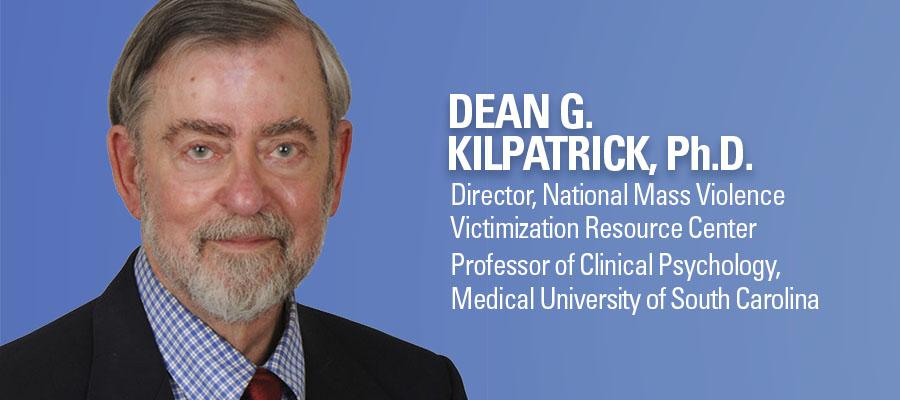Mass Violence Is a Public Health Crisis

Mass violence and domestic terrorism comprise a major public health crisis in America.
It is a crisis that strikes at our most basic and collective sense of humanity. It is a crisis that repeats on a now regular basis in communities large and small across America. And it is a crisis that has literally struck fear in the lives of countless people, as indicated by a Gallup poll conducted in 2019, which found that nearly half of Americans fear that they or a family member will be a victim of a mass shooting.
The mission of the National Mass Violence Victimization Resource Center (NMVVRC) is to improve community preparedness and the nation’s capacity to serve victims and communities recovering from mass violence incidents (MVI) through research, planning, training, technology and collaboration.
There has been no better collaboration to help us achieve this important mission than our principal partnership with the American Hospital Association (AHA) and its Hospitals Against Violence initiative. Our collaborative efforts denote that any mass violence preparation strategies that fail to proactively engage and integrate the leaders and dedicated health care workforce cannot ultimately succeed.
In the Supporting Victims and Communities of Mass Violence Incidents Webinar Series co-sponsored by the NMVVRC and AHA in 2021, we heard from hospital executives, trauma surgeons, victim service professionals and survivors about the need for coordinated advance planning among hospitals, social and victim/survivor services, and behavioral health professionals to identify and address the immediate needs of mass violence victims and impacted communities. We learned about their recognition of and concern for the long-term impact of mass violence crimes on victims, survivors and community members that demand additional resources and ongoing coordination to effectively address such needs. And we know from the NMVVRC’s community needs assessment surveys conducted in Parkland, El Paso and Pittsburgh that the prevalence of current and past-year PTSD in impacted communities is four-to-five times higher than the national average.
I’m very excited about our joint effort to create a “Hospital & Health Care Systems Leadership Checklist,” which is designed to provide a foundation to hospitals and health care systems to determine their readiness, capacity and immediate-, short-term and long-term resources to identify the needs of mass violence survivors and affected communities; and to collaboratively address these needs with allied professionals, including first responders, victim service professionals, and mental and behavioral health professionals. When published later this summer, the checklist will be a concise, valuable resource for all of us involved in mass violence readiness, response and resilience.
We at the NMVVRC also recognize that the public health crisis of mass violence can too often create a personal health crisis, including burnout, for hospital and health care professionals who respond to these catastrophic crimes. When the daily stress of working in health care is compounded by the acute and overwhelming stress of heroically responding to mass violence victims and their loved ones, personal devastation and despair can be predictable outcomes.
We know from decades of research that an individual’s degree of social support is an important mitigating factor in reducing the mental health impact of traumatic events. Through our partnership with the AHA, we share a commitment to ensure that multidisciplinary clinical care, and long-term psychological and peer support for health care professionals who respond to mass violence crimes are core components of any long-term resilience strategy.
As the NMVVRC continues our efforts to help communities build resilience in the aftermath of mass violence crimes, we believe that efforts to also strengthen the personal resilience of hospital and health care workers who have witnessed first-hand and responded to unimaginable physical and emotional trauma are a priority.
Dean G. Kilpatrick, Ph.D., is the director of the National Mass Violence Victimization Resource Center. He also is the Distinguished University Professor of Clinical Psychology in the Department of Psychiatry & Behavioral Sciences at the Medical University of South Carolina.

